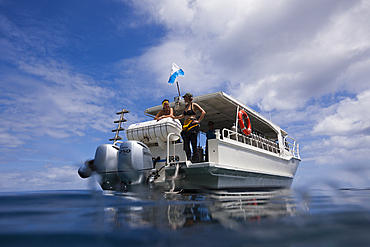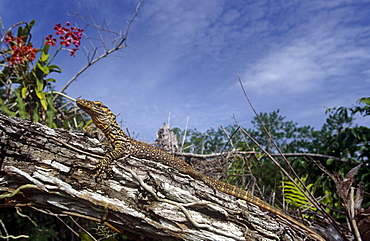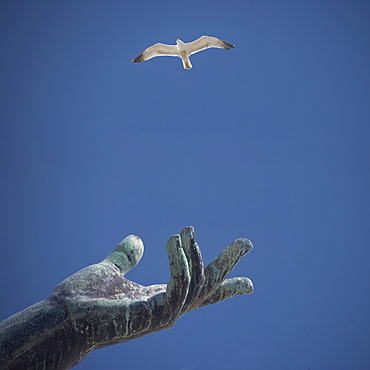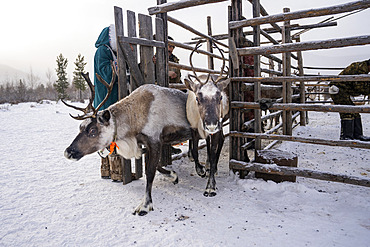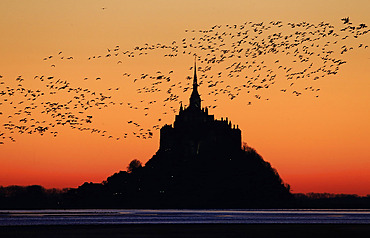Results
1 results found

With such demands for Lake Victoria's Nile perch, the value of the fishery has risen considerably. Labour inflows into the fishery have increased along with growing demand. In 2004, there were 51,712, boats on the lake and 153,066 fishermen. All along the lakeshore, G®?boom townsG®ö have developed in response to the demands of fishing crews with money to spend from a dayG®ös fishing. These towns resemble shanties and have little in the way of services. Jinja, Uganda, East Africa
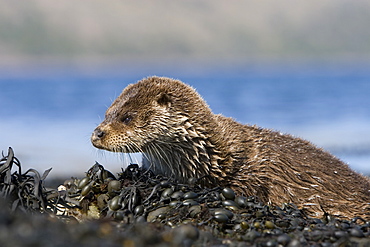
Eurasian river otter (Lutra lutra) resting on seaweed. Otters spend a great deal of time resting ashore, usually near to the water's edge. This time is spent sleeping and preening fur etc. Visits ashore may also be to find fresh water to drink. Hebrides, Scotland
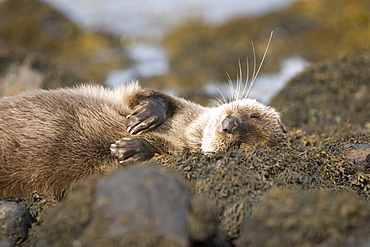
Eurasian river otter (Lutra lutra) resting in the seaweed and rocks. Otters spend a great deal of time resting, usually close to the water's edge or on rocks just offshore. This time is spent sleeping and preening fur etc. Notice the recent injuries sustained by this otter around the head and neck area. Hebrides, Scotland
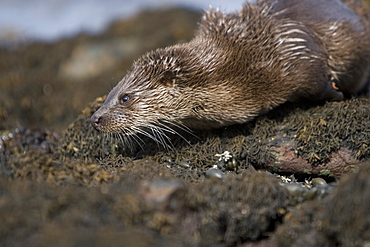
Eurasian river otter (Lutra lutra) resting in the seaweed and rocks. Otters spend a great deal of time resting, usually close to the water's edge or on rocks just offshore. This time is spent sleeping and preening fur etc. Notice the recent injuries sustained by this otter around the head and neck area. Hebrides, Scotland
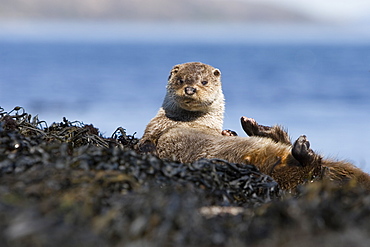
Eurasian river otter (Lutra lutra) resting on seaweed. Otters spend a great deal of time resting ashore, usually near to the water's edge. This time is spent sleeping and preening fur etc. Visits ashore may also be to find fresh water to drink. Hebrides, Scotland

Komodo dragon (Varanus komodoensis) hatchlings, which spend 2 - 3 years off the gound in the canopy.
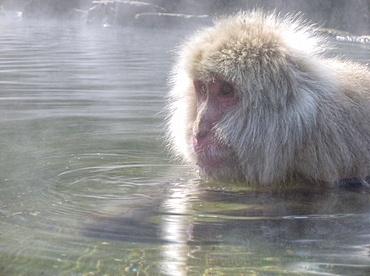
Japanese Macaque (Macaca fuscata)wild adult, keeping warm in a hot spring. Honshu Japan. Status:least concern but 1/10 of the pop is killed by humans evey year. more info: They spend much of the winter swimming,diving or just contemplating life in the warm water.
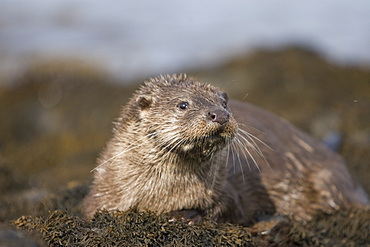
Eurasian river otter (Lutra lutra) resting in the seaweed and rocks. Otters spend a great deal of time resting, usually close to the water's edge or on rocks just offshore. This time is spent sleeping and preening fur etc. Notice the recent injuries sustained by this otter around the head and neck area. Hebrides, Scotland
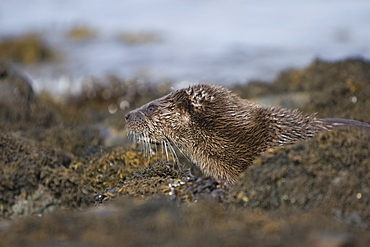
Eurasian river otter (Lutra lutra) resting in the seaweed and rocks. Otters spend a great deal of time resting, usually close to the water's edge or on rocks just offshore. This time is spent sleeping and preening fur etc. Notice the recent injuries sustained by this otter around the head and neck area. Hebrides, Scotland
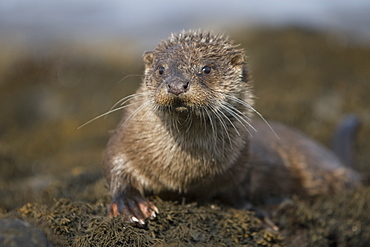
Eurasian river otter (Lutra lutra) resting in the seaweed and rocks. Otters spend a great deal of time resting, usually close to the water's edge or on rocks just offshore. This time is spent sleeping and preening fur etc. Notice the recent injuries sustained by this otter around the head and neck area. Hebrides, Scotland
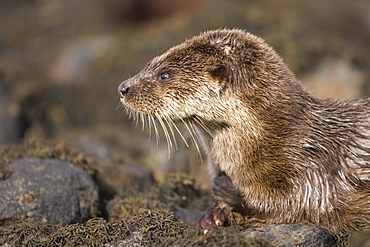
Eurasian river otter (Lutra lutra) resting in the seaweed and rocks. Otters spend a great deal of time resting, usually close to the water's edge or on rocks just offshore. This time is spent sleeping and preening fur etc. Notice the recent injuries sustained by this otter around the head and neck area. Hebrides, Scotland
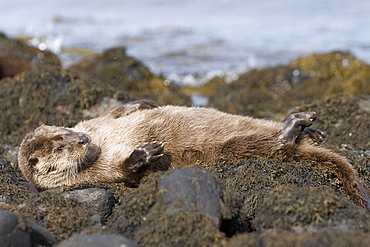
Eurasian river otter (Lutra lutra) resting in the seaweed and rocks. Otters spend a great deal of time resting, usually close to the water's edge or on rocks just offshore. This time is spent sleeping and preening fur etc. Notice the recent injuries sustained by this otter around the head and neck area. Hebrides, Scotland
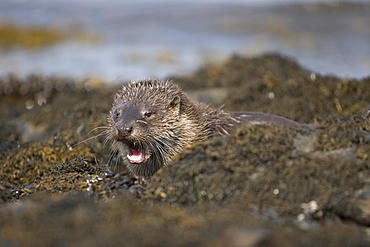
Eurasian river otter (Lutra lutra) resting in the seaweed and rocks. Otters spend a great deal of time resting, usually close to the water's edge or on rocks just offshore. This time is spent sleeping and preening fur etc. Notice the recent injuries sustained by this otter around the head and neck area. Hebrides, Scotland
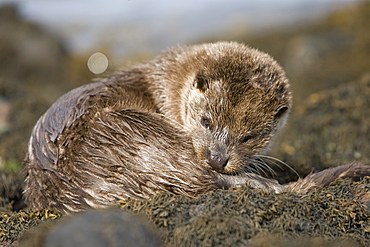
Eurasian river otter (Lutra lutra) resting in the seaweed and rocks. Otters spend a great deal of time resting, usually close to the water's edge or on rocks just offshore. This time is spent sleeping and preening fur etc. Notice the recent injuries sustained by this otter around the head and neck area. Hebrides, Scotland

Eurasian river otter (Lutra lutra) resting in the seaweed and rocks. Otters spend a great deal of time resting, usually close to the water's edge or on rocks just offshore. This time is spent sleeping and preening fur etc. Notice the recent injuries sustained by this otter around the head and neck area. Hebrides, Scotland
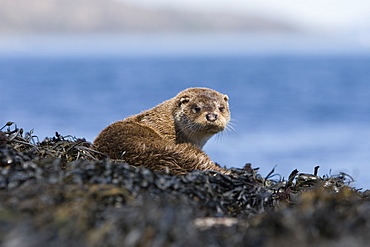
Eurasian river otter (Lutra lutra) resting on seaweed. Otters spend a great deal of time resting ashore, usually near to the water's edge. This time is spent sleeping and preening fur etc. Visits ashore may also be to find fresh water to drink. Hebrides, Scotland
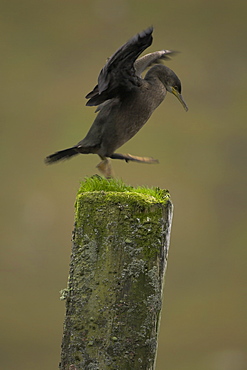
Shag (Phalacrocorax aristotelis) portrait on old pier support. Taken at the top of Loch Etive in Glen Etive on an old pier. Shags feathers are not fully waterproof so they spend a lot of time preening and drying out of the water , Scotland
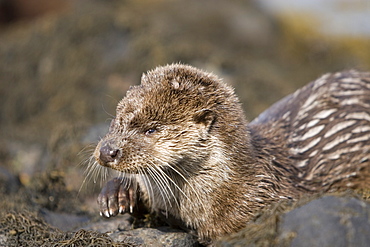
Eurasian river otter (Lutra lutra) resting in the seaweed and rocks. Otters spend a great deal of time resting, usually close to the water's edge or on rocks just offshore. This time is spent sleeping and preening fur etc. Notice the recent injuries sustained by this otter around the head and neck area. Hebrides, Scotland
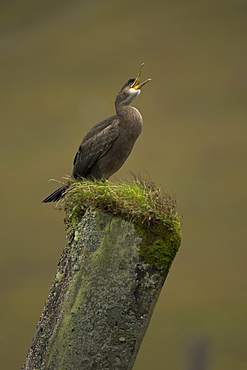
Shag (Phalacrocorax aristotelis) portrait on old pier support. Taken at the top of Loch Etive in Glen Etive on an old pier. Shags feathers are not fully waterproof so they spend a lot of time preening and drying out of the water. Scotland
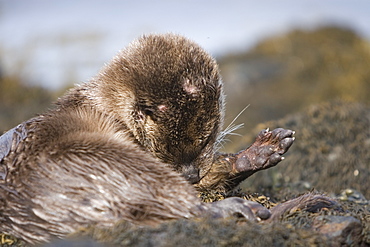
Eurasian river otter (Lutra lutra) resting in the seaweed and rocks. Otters spend a great deal of time resting, usually close to the water's edge or on rocks just offshore. This time is spent sleeping and preening fur etc. Notice the recent injuries sustained by this otter around the head and neck area. Hebrides, Scotland
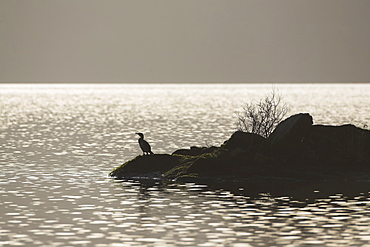
Cormorant (Phalacrocorax carbo) silhouetted against water while drying on an Island. Cormorant wings are not fully waterproof therefore they spend a lot of time on rocks, bouys etc drying off their wings.. Argyll, Scotland
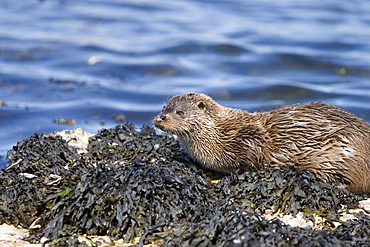
Eurasian river otter (Lutra lutra) resting on seaweed. Otters spend a great deal of time resting ashore, usually near to the water's edge. This time is spent sleeping and preening fur etc. Visits ashore may also be to find fresh water to drink. Hebrides, Scotland
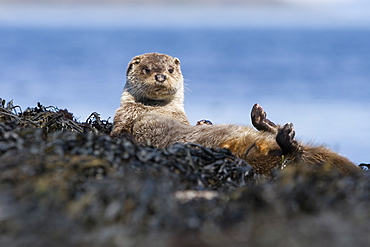
Eurasian river otter (Lutra lutra) resting on seaweed. Otters spend a great deal of time resting ashore, usually near to the water's edge. This time is spent sleeping and preening fur etc. Visits ashore may also be to find fresh water to drink. Hebrides, Scotland
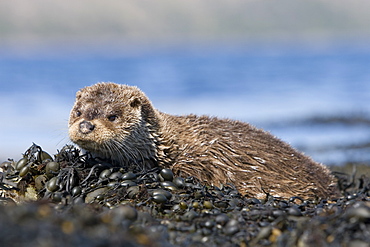
Eurasian river otter (Lutra lutra) resting on seaweed. Otters spend a great deal of time resting ashore, usually near to the water's edge. This time is spent sleeping and preening fur etc. Visits ashore may also be to find fresh water to drink. Hebrides, Scotland
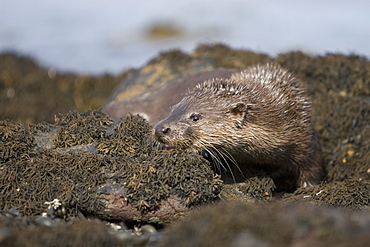
Eurasian river otter (Lutra lutra) resting in the seaweed and rocks. Otters spend a great deal of time resting, usually close to the water's edge or on rocks just offshore. This time is spent sleeping and preening fur etc. Notice the recent injuries sustained by this otter around the head and neck area. Hebrides, Scotland
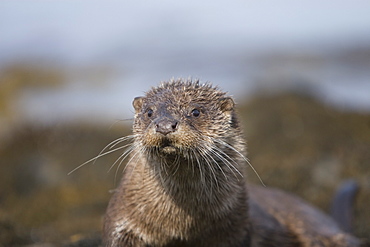
Eurasian river otter (Lutra lutra) resting in the seaweed and rocks. Otters spend a great deal of time resting, usually close to the water's edge or on rocks just offshore. This time is spent sleeping and preening fur etc. Notice the recent injuries sustained by this otter around the head and neck area. Hebrides, Scotland
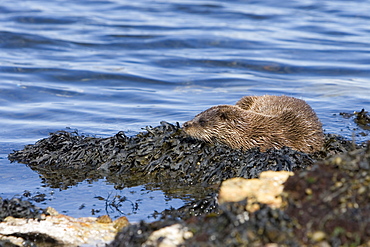
Eurasian river otter (Lutra lutra) resting on seaweed. Otters spend a great deal of time resting ashore, usually near to the water's edge. This time is spent sleeping and preening fur etc. Visits ashore may also be to find fresh water to drink. Hebrides, Scotland
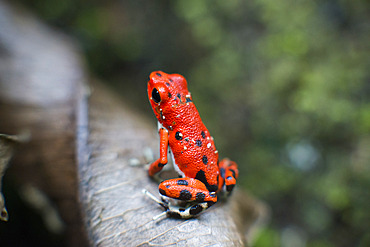
Strawberry Poison Frog (Dendrobates pumilio), adult, Bastimentos National Park, Bocas del Toro, Panama. The strawberry poison frog or strawberry poison-dart frog (Oophaga pumilio or Dendrobates pumilio) is a species of small amphibian poison dart frog found in Central America. It is common throughout its range, which extends from eastern central Nicaragua through Costa Rica and northwestern Panama. The species is often found in humid lowlands and premontane forest, but large populations are also found in disturbed areas such as plantations. The strawberry poison frog is perhaps most famous for its widespread variation in coloration, comprising approximately 15���30 color morphs, most of which are presumed to be true-breeding. O. pumilio, while not the most poisonous of the dendrobatids, is the most toxic member of its genus. The species is most diverse in Panama with varieties in vivid shades of all red, orange, blue, yellow or green, green and yellow, white with red, orange or black and spotted varieties. The most colorful mix is found in Isla Bastimentos Marine National Park though not all in one place. Colors vary by location. A beach on the north side of the island is named after the species. Two of Southern Explorations' Panama tours visit red frog habitat. Both the eight-day Panama Adventure trip and eleven-day Panama Highlights trip spend time in Isla Bastimentos Marine National Park and the former also goes to Red Frog Beach.
The red frog is not as poisonous as some of its cousins and is not a threat to humans. It subsists on a diet of ants that dine on poisonous plants, providing the red frog its protective skin toxin. Males attract females with a loud quick chirp. To hear the distinctive sound before you depart on your Panama tours, go to the University of Michigan Museum's biodiversity website (www.animaldiversity.ummz.umich.edu.) After birth, the tadpoles climb aboard the mother who deposits them in different protected areas where she retu
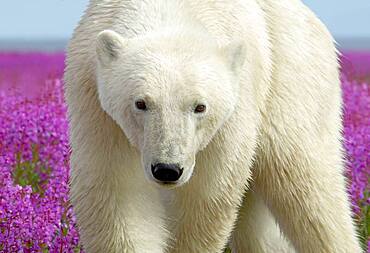
Polar Bear (Ursa maritimus) in fireweed (Epilobium angustifolium) on an island off the sub-arctic coast of Hudson Bay, Churchill, Manitoba, Canada. Bears come to spend the summer loafing on the island and looking for a careless seal or dead whale to wash up. Global warming has shortened their winter so they are increasingly looking for food in the summer.
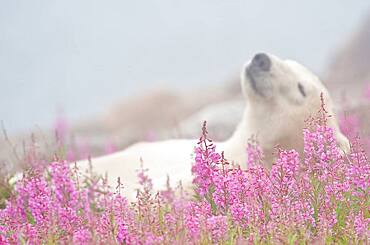
Polar Bear (Ursa maritimus) in fireweed (Epilobium angustifolium) on an island off the sub-arctic coast of Hudson Bay, Churchill, Manitoba, Canada. Bears come to spend the summer loafing on the island and looking for a careless seal or dead whale to wash up. Global warming has shortened their winter so they are increasingly looking for food in the summer.

Polar Bear (Ursa maritimus) in fireweed (Epilobium angustifolium) on an island off the sub-arctic coast of Hudson Bay, Churchill, Manitoba, Canada. Bears come to spend the summer loafing on the island and looking for a careless seal or dead whale to wash up. Global warming has shortened their winter so they are increasingly looking for food in the summer.
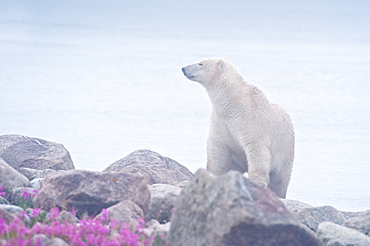
Polar Bear (Ursa maritimus) in fireweed (Epilobium angustifolium) on an island off the sub-arctic coast of Hudson Bay, Churchill, Manitoba, Canada. Bears come to spend the summer loafing on the island and looking for a careless seal or dead whale to wash up. Global warming has shortened their winter so they are increasingly looking for food in the summer.
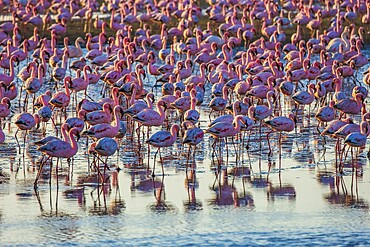
Pink flamingos. Interesting birdwatching. Gorgeous pink birds feed and spend time in the shallow water of the Namibian resort of Swakopmund. Ecological, zoological and photo tourism concept

African millennial woman wearing white wireless headphones, listening music, resting and lying on couch in living room. Girl spend lazy weekend at home
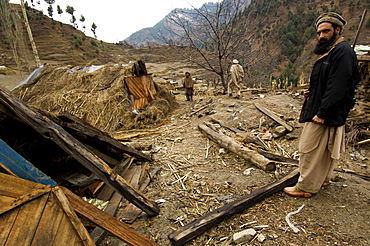
Men from the village of Gangwal, which was devastated in the 2005 earthquake, show makeshift shelters that villagers constructed themselves after the quake, in the upper Allai Valley, NWFP, Pakistan. Most of the villagers fled to tent camps at lower elevations to spend the winter, leaving just a handful of families to look after livestock and possessions. The people of this remote area are Pashtun and until the earthquake, neither the government nor the military had much presence or influence in the region.
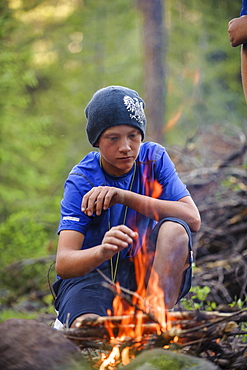
A boy builds a fire in preparation to spend the night out and earn the WIlderness Survival Merit Badge, at the end of Troop 693's six day backpack trip through the High Uintas Wilderness Area, Uintas Range, Utah
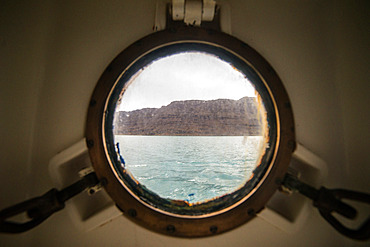
The view from a porthole. It's a magical moment. It's early in the morning and we're finally discovering a piece of the island on which we'll spend 13 months. Table Bay, Kerguelen Archipelago
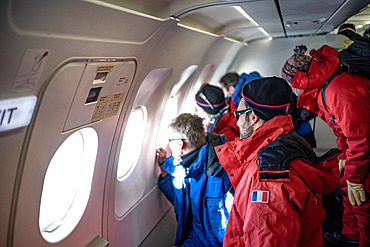
Team of Antarctic expeditionaries watching the landscape through the windows of the Airbus A320 carrying them from Hobart;Tasmania) to Mario Zucchelli;Italian coastal Antarctic base), as they approach the latter. These are the first summer campers. In red are those who will then take a Basler to the French coastal summer station of Cap Prud'Homme or Robert Guillard. They'll spend a few days opening it up and warming it up, before moving on to the Dumont d'Urville base;6km from Cap Prud'Homme), marking the end of wintering there. In blue: the expeditionaries bound for Concordia.

Reindeer preparing to come out of their enclosure to spend the day in the surrounding taiga for food, around Uoyan, Buryatia, Russia
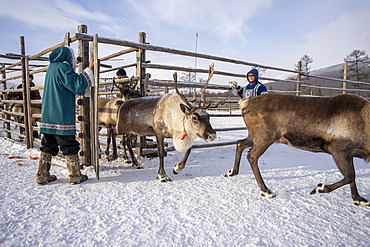
Reindeer coming out of the enclosure to spend the day in the surrounding taiga to feed, around Uoyan, Buryatia, Russia
